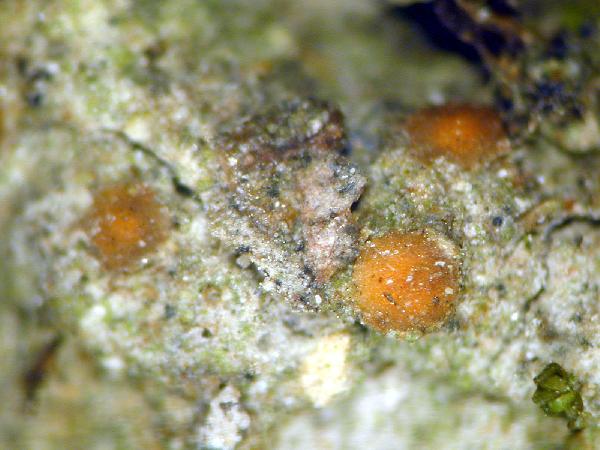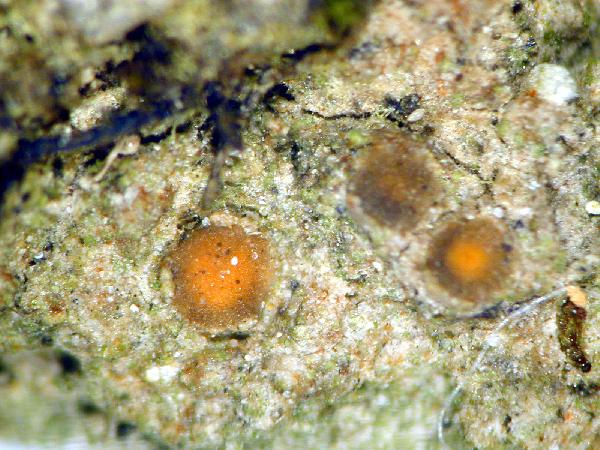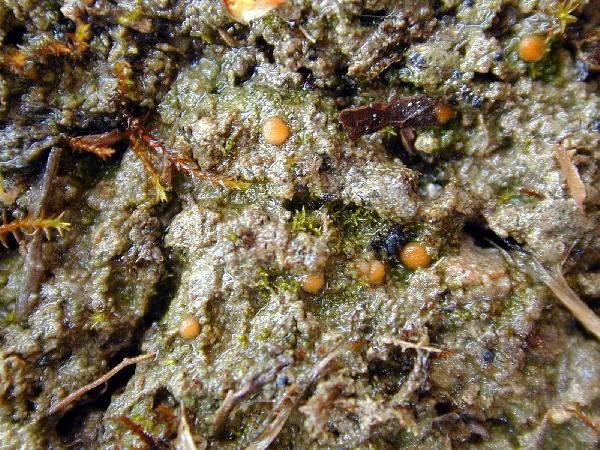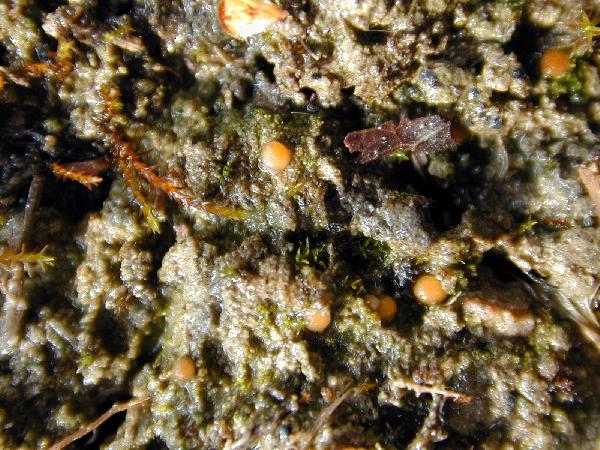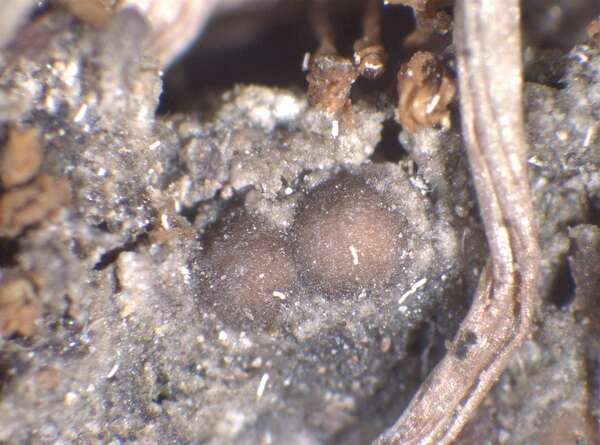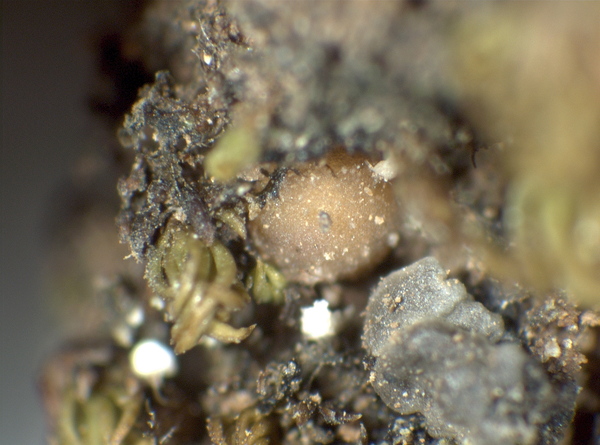Biatorella fossarum (Fr.) Th. Fr.
Lichenogr. Scand., 2: 397, 1874. Basionym: Lecidea fossarum Dufour ex Fr. - Lichenogr. Eur. Ref.: 364, 1831.
Synonyms: Biatora rousselii Durieu & Mont.; Biatorella rousselii (Durieu & Mont.) De Not.
Distribution: N - Ven, TAA (Nascimbene & al. 2022), Emil (Fariselli & al. 2020), Lig. C - Tosc. S - Si (Caniglia & al. 2005).
Description: Thallus crustose, pale grey, thin and inconspicuous, granulose and poorly delimited. Apothecia biatorine, 0.4-1(-1.1) mm across, pale orange-red to grey-brown, not constricted at base, with a rapidly convex disc, emarginate. Proper exciple poorly developed, of more or less parallel, colourless to pale yellow hyphae, I+ blue; epithecium almost colourless to pale orange-yellow, K-, with a layer of crystals; hymenium colourless to pale yellow, I+ deep blue; paraphyses richly branched and anastomosing in upper part, 1.5-2 µm thick in lower part, the apical cells 4-7 µm wide; hypothecium pale grey-yellow. Asci >100-spored, cylindrical to clavate, with a simple, K/I± faintly blue apical dome surrounded by weakly amyloid wall layers, Biatorella-type (see Hafellner & Casares-Porcel 1992). Ascospores 1-celled, hyaline, cylindrical, 8-13 x 2.3-3 µm. Photobiont chlorococcoid. Spot tests: K-, C-, KC-, P-, UV-. Chemistry: without lichen substances.Note: on calciferous, often slightly decalcified soil in rather disturbed habitats; chiefly southern in Europe; closely related to B. hemisphaerica. Most Italian records must be checked against the latter species.
Growth form: Crustose
Substrata: soil, terricolous mosses, and plant debris
Photobiont: green algae other than Trentepohlia
Reproductive strategy: mainly sexual
Pioneer species
Commonnes-rarity: (info)
Alpine belt: absent
Subalpine belt: absent
Oromediterranean belt: absent
Montane belt: extremely rare
Submediterranean belt: extremely rare
Padanian area: absent
Humid submediterranean belt: very rare
Humid mediterranean belt: extremely rare
Dry mediterranean belt: absent

Predictive model
Herbarium samples
Growth form: Crustose
Substrata: soil, terricolous mosses, and plant debris
Photobiont: green algae other than Trentepohlia
Reproductive strategy: mainly sexual
Pioneer species
Commonnes-rarity: (info)
Alpine belt: absent
Subalpine belt: absent
Oromediterranean belt: absent
Montane belt: extremely rare
Submediterranean belt: extremely rare
Padanian area: absent
Humid submediterranean belt: very rare
Humid mediterranean belt: extremely rare
Dry mediterranean belt: absent

Predictive model
| Herbarium samples |
 INDEX FUNGORUM
INDEX FUNGORUM
 GBIF
GBIF
 DOLICHENS
DOLICHENS
